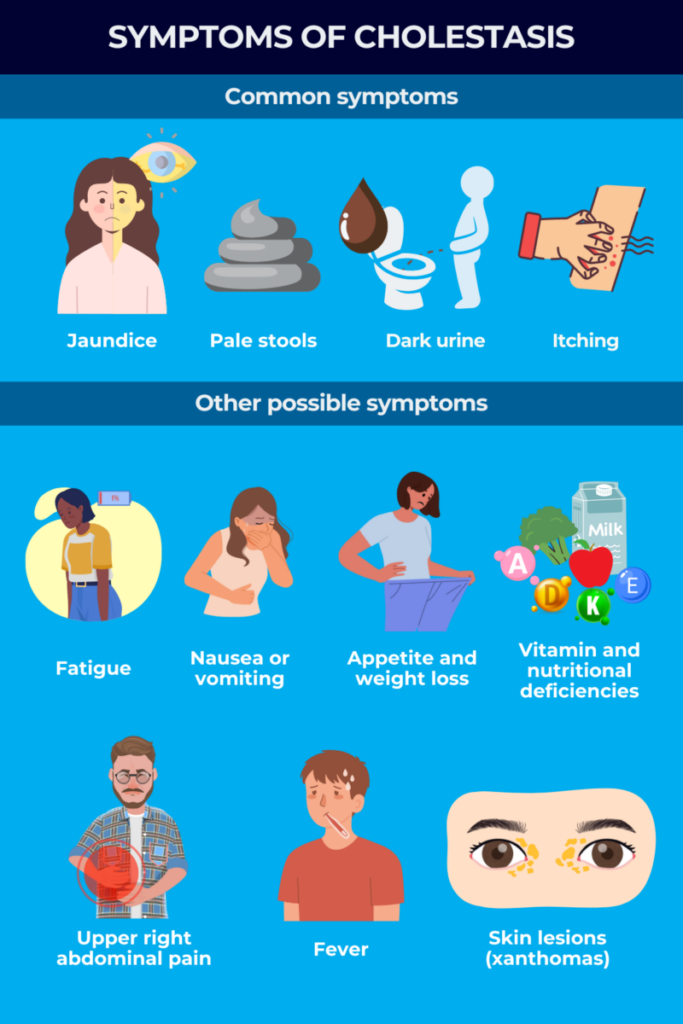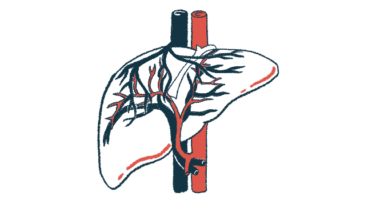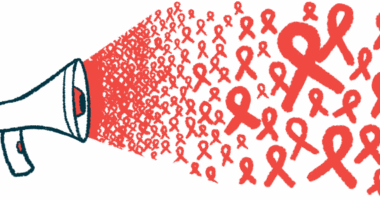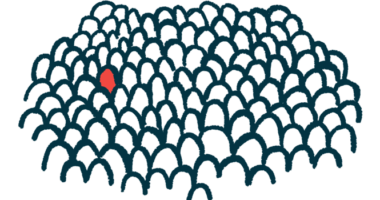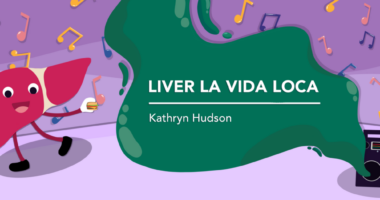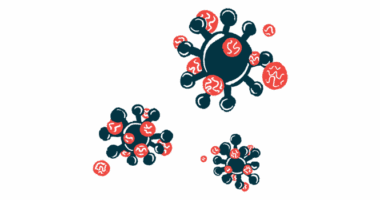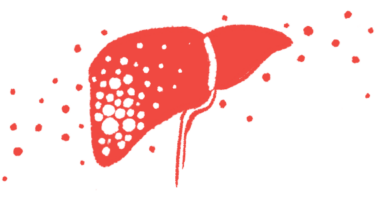Cholestasis symptoms
Last updated Sept. 16, 2024, by Lindsey Shapiro, PhD

The most common symptoms of cholestasis, a condition where the flow of the digestive fluid bile out of the liver is slowed or stalled, include color changes in the skin, eyes, urine, and stool, as well as itchy skin.
These cholestasis signs occur because bile accumulates to toxic levels in the liver and leaks into the bloodstream instead of making its way to the digestive tract where it is needed to help break down fats.
Cholestasis can be caused by certain medications and a wide range of conditions, including physical blockages in or around the liver, hormonal changes during pregnancy, or an underlying liver disease including progressive familial intrahepatic cholestasis, biliary atresia, Alagille syndrome, viral hepatitis, and primary biliary cholangitis.
In the long term, chronic cholestasis can cause significant and irreversible liver damage. Appropriately and promptly treating cholestasis symptoms and their underlying cause is thus critical to maintaining liver health and avoiding life-threatening cholestasis complications later on.
Common symptoms of cholestasis
Bile, a yellow-green digestive fluid, is produced in the liver and is transported through a series of tubes, called bile ducts, to the small intestine, where it helps with digestion. In cholestasis, bile doesn’t flow properly through these ducts, and its components subsequently accumulate in the liver and bloodstream.
The most common symptoms of cholestasis — jaundice, or a yellowing of the skin and white parts of the eyes, pale stools, dark urine, and itchy skin — are associated with the buildup of two main constituents of bile:
- Bilirubin, a yellow-reddish waste product that’s made when red blood cells are broken down. The liver normally disposes of bilirubin by incorporating it into bile, which is transported through the gastrointestinal tract for excretion through feces.
- Bile acids, which help with fat digestion and absorption in the intestines, are incorporated into bile in the liver and released into the small intestine in response to a meal. Most are then reabsorbed to go back to the liver for use in subsequent digestion.
Jaundice
Jaundice, a yellow discoloration of the skin, white parts of the eyes, and mucous membranes, is commonly observed in people with cholestasis. The relationship between cholestasis and jaundice is mediated by the accumulation of bilirubin in the bloodstream. Instead of being properly excreted through feces when present at high levels in circulation, the yellow-reddish molecule starts to leak into neighboring tissues, making the skin, eyes, and mucous membranes yellowish.
Pale stools and dark urine
Changes in stool and urine color are also among the most common cholestasis symptoms, again associated with the body’s inability to properly excrete bilirubin.
In the intestines, bilirubin is metabolized into a brownish molecule, which gives stools their usual brown color. Because bilirubin can’t make its way into the intestines to be excreted through feces, people with cholestasis may have pale stools, which can take a white or clay color.
In addition, reduced levels of bile in the intestines may affect fat digestion and result in stools that contain too much fat, making them float and smell foul.
As bilirubin is not eliminated via feces and instead accumulates in the bloodstream, it makes its way to the kidneys to be excreted through the urine. This can lead to dark urine.
Itchy skin
Itchy skin, also known as pruritus, is reported by 80% to 100% of people with cholestasis, depending on the underlying cause of the disease. Considered one of the most distressing symptoms of cholestasis, pruritus is believed to occur due to bile acids and other molecules accumulating in the bloodstream and skin.
Cholestasis itchy skin usually occurs throughout the body, but for some people it might be more pronounced in certain areas like the hands, feet, arms, or legs. Cholestatic itching is generally not accompanied by any obvious rash or skin manifestation, but excessive scratching can lead to cuts or lesions on the skin.
The severity of pruritus can vary widely. Some patients will experience only mild itching, but others might have severe and debilitating itching that can lead to problems like sleep deprivation, depression, and suicidal thoughts.
Other possible symptoms
People with cholestasis can also experience other symptoms, depending on the underlying cause of cholestasis. These may include:
- Fatigue, possibly due to poor sleep and changes in the nervous system.
- Nausea, vomiting, appetite loss, and/or weight loss due to digestive issues.
- Deficiency of fat-soluble vitamins such as vitamins A, D, E, and K due to problems in absorbing these vitamins in the intestines. This may ultimately lead to symptoms such as malnutrition, failure to thrive for infants and children, weak bones, or easy bleeding.
- Pain in the right upper part of the abdomen, where the liver is located.
- Fever, often associated with infections or substance use that cause liver inflammation.
- Xanthomas, or raised skin lesions that usually have a waxy, yellowish appearance. These skin lesions, which generally do not cause any discomfort, consist of deposits of the fatty molecule cholesterol underneath the skin. Xanthomas are usually associated with conditions that cause bile duct obstruction or other bile duct abnormalities.
The importance of recognizing early signs
For some, cholestasis may be a temporary problem, but for others, it is a chronic condition that can lead to more serious health issues later on. An early identification of cholestasis signs is therefore critical for ensuring the best possible outcomes.
The sooner doctors know cholestasis is present, the earlier they can start looking for its underlying cause and establish an appropriate treatment plan. Treatment approaches will aim to restore bile flow, ease cholestasis symptoms, manage or avoid any related complications, and make living with cholestasis easier.
Such interventions can include medication, lifestyle changes, or other procedures such as surgery to restore normal bile flow.
If left untreated, cholestasis can ultimately lead to serious and potentially life-threatening problems, including:
- Cirrhosis, or permanent liver scarring and damage that can affect the organ’s function and result in liver failure in later stages. At that point, a liver transplant is necessary.
- Hepatocellular carcinoma, the most common type of liver cancer.
A prompt diagnosis and treatment are essential for the prevention of these complications, so patients should reach out to their healthcare team as soon as they notice any possible cholestasis signs.
Intrahepatic cholestasis of pregnancy symptoms
Intrahepatic cholestasis of pregnancy (ICP), sometimes known as cholestasis of pregnancy and obstetric cholestasis, is a form of cholestasis that most commonly occurs in the later stages of pregnancy. The most common pregnancy-related liver disease, ICP is thought to be caused by genetic and environmental factors, along with pregnancy-related changes in hormone levels that affect bile flow.
Intense pruritus is usually the most noticeable symptom of ICP, and often develops after the 30th week (around seven months) of pregnancy. It commonly affects the palms and soles of the feet and is worse at night.
Women with ICP may sometimes experience other cholestasis symptoms such as nausea, low appetite, fatigue, abdominal pain, pale stool, and dark urine, but jaundice is rare.
Cholestasis of pregnancy symptoms usually resolve on their own after pregnancy ends, but women who had ICP may be at a higher risk of liver problems later in life and are more likely to experience ICP again in a subsequent pregnancy.
Cholestasis of pregnancy also increases the risk of maternal, fetal, and newborn complications including:
- preeclampsia, a condition marked by persistent high blood pressure and organ dysfunction that usually occurs after 20 weeks of gestation
- gestational diabetes, a common pregnancy complication marked by elevated blood sugar
- preterm birth, or birth occurring before 37 weeks of gestation
- breathing problems in the newborn
- stillbirth.
Liver Disease News is strictly a news and information website about the disease. It does not provide medical advice, diagnosis or treatment. This content is not intended to be a substitute for professional medical advice, diagnosis, or treatment. Always seek the advice of your physician or other qualified health provider with any questions you may have regarding a medical condition. Never disregard professional medical advice or delay in seeking it because of something you have read on this website.
Recent Posts
- Less invasive Kasai surgery works better for infants with BA: Study
- US states, doctors split with CDC on hepatitis B shots for newborns
- PSC-IBD study shows need for regional management guidelines
- Staying on top of MASH may mean not staying on the transplant list
- Common virus may play a role in ICP development, study finds
Related articles
